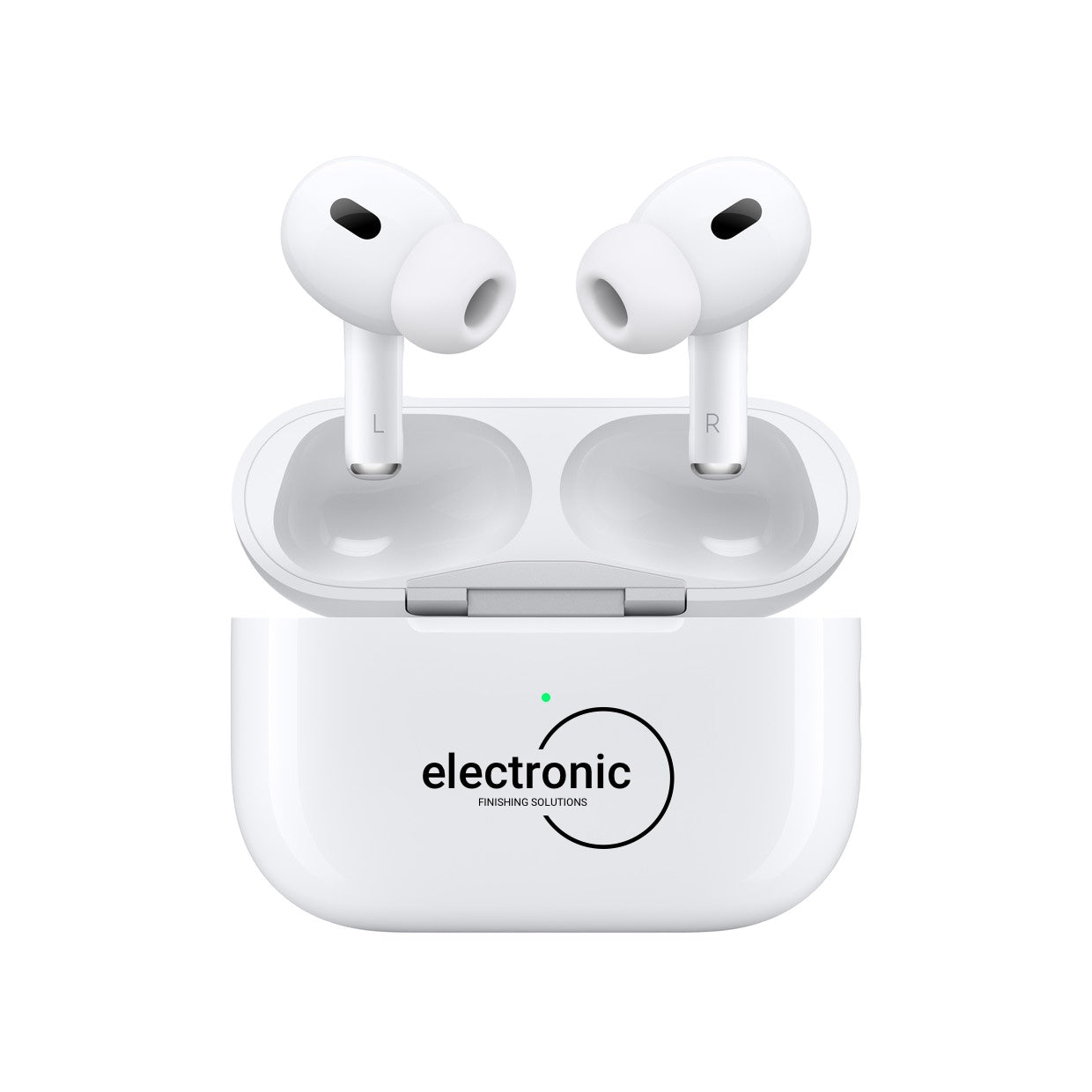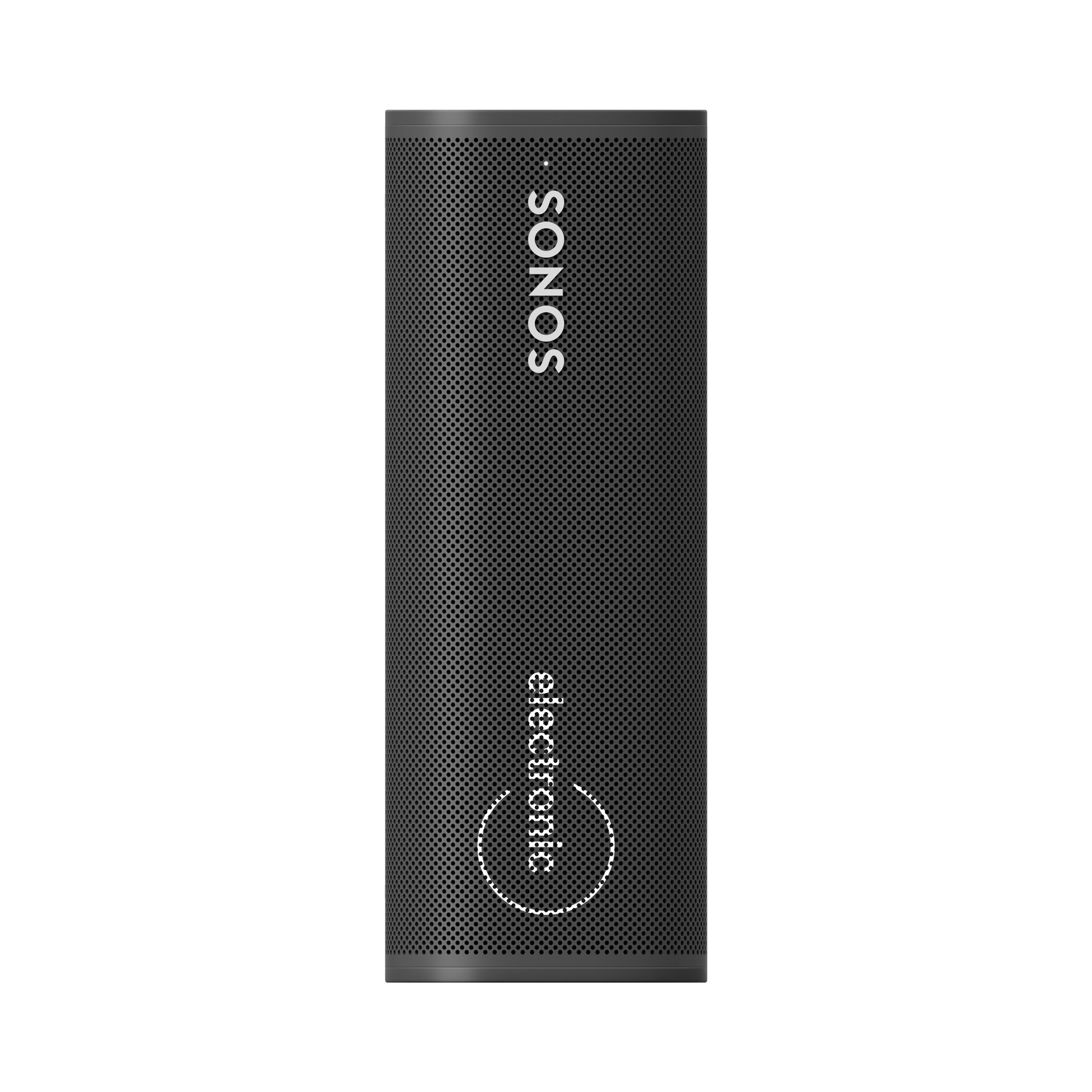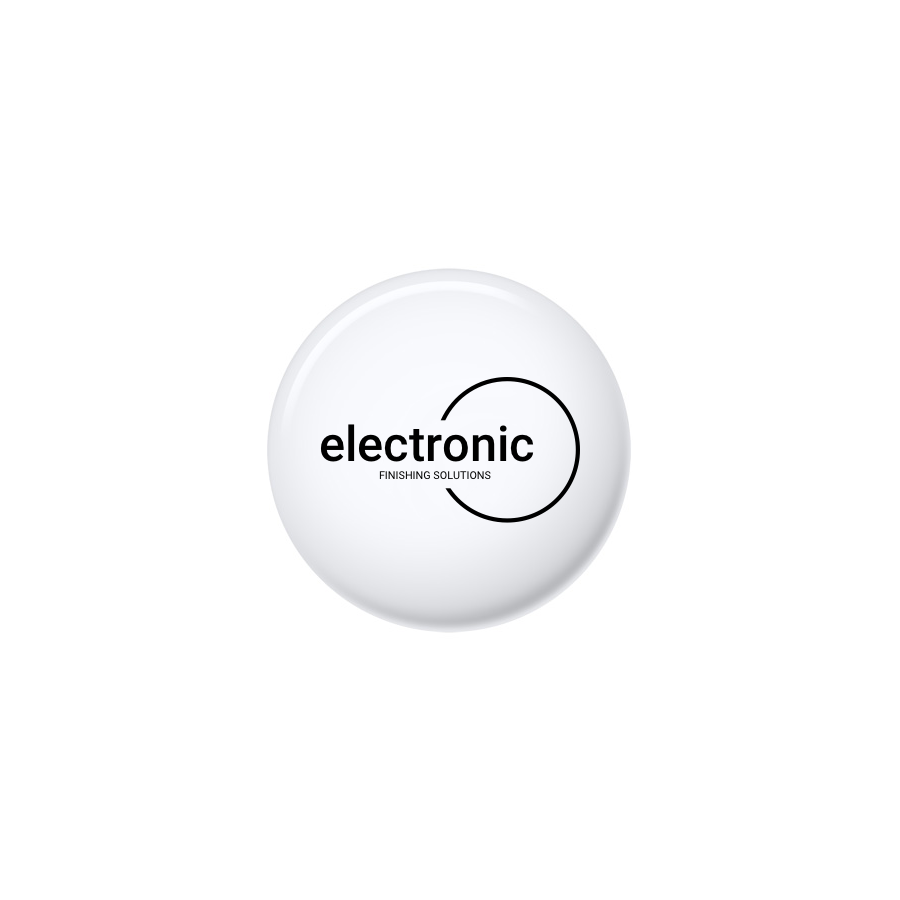Ignite Your Brand Recognition
Want to boost your brand's visibility and market share? This listicle delivers seven proven brand awareness strategies to elevate your recognition and drive growth. Learn how content marketing, social media, influencer partnerships, SEO, public relations, event marketing, and strategic partnerships can build a stronger brand presence. Effective brand awareness strategies are essential for attracting customers, building trust, and achieving long-term success. This list provides actionable insights applicable to both startups and established corporations looking to strengthen their brand in 2025 and beyond.
1. Content Marketing
Content marketing is a cornerstone of any successful brand awareness strategy. It's a strategic marketing approach focused on creating and distributing valuable, relevant, and consistent content to attract and retain a clearly defined audience. Unlike traditional advertising, which often interrupts the consumer experience, content marketing seeks to provide value and build relationships. By consistently delivering high-quality content that educates, entertains, or informs, businesses can position themselves as thought leaders and trusted resources within their industry, ultimately increasing brand visibility and recognition. This approach fosters organic growth and establishes long-term connections with potential customers, driving engagement and building brand loyalty.

Content marketing operates on the principle of providing value upfront. Instead of directly promoting products or services, it focuses on addressing the needs and interests of the target audience. This could involve creating blog posts, articles, videos, infographics, podcasts, or any other form of content that resonates with the target demographic. By consistently delivering valuable content, businesses can attract and engage their ideal customers, nurturing them through the sales funnel organically. The focus shifts from a hard sell to building trust and credibility, fostering a sense of community around the brand.
Numerous examples demonstrate the effectiveness of content marketing in building brand awareness. HubSpot, a leading marketing software company, has built a vast library of resources, including blog posts, ebooks, and courses, that provide valuable insights into inbound marketing. This positions them as a trusted authority in the field. Red Bull, known for its association with extreme sports, has created a content ecosystem that extends beyond traditional advertising. Their investment in high-octane videos and events fosters a strong brand identity and resonates deeply with their target audience. Similarly, Mailchimp's focus on providing small business marketing guides and resources positions them as a valuable partner for entrepreneurs. Adobe, with its Creative Suite tutorials and inspiration galleries, caters to a creative audience, building brand loyalty and driving product adoption. These diverse examples highlight the adaptability and effectiveness of content marketing across various industries.
For Fortune 100 companies, content marketing offers a powerful way to establish thought leadership and control the narrative within their industry. By producing high-quality research reports, white papers, and industry analyses, these companies can solidify their position as experts and influence key decision-makers. Tech startups can leverage content marketing to build a strong online presence and generate buzz around their innovative products or services. Blog posts, social media updates, and interactive content can be used to educate potential customers and establish a unique brand voice. Corporate marketing teams can use content to nurture leads, drive website traffic, and build stronger relationships with existing customers. Venture capital firms can use content to attract promising startups and showcase their portfolio companies. Event coordinators can utilize content marketing to generate excitement around upcoming events and attract attendees.
While the benefits are substantial, content marketing requires a strategic approach. Developing a content calendar aligned with business goals is crucial. This ensures that content creation efforts are focused and contribute to overall marketing objectives. Prioritizing customer needs over direct selling is paramount. Content should address customer pain points, answer their questions, and provide valuable information that helps them make informed decisions. Repurposing content across multiple channels maximizes reach and efficiency. A blog post can be transformed into a series of social media updates, an infographic, or even a short video. Analytics play a vital role in identifying top-performing content types and optimizing future content creation efforts. Collaborating with industry experts adds credibility and expands reach. By featuring guest bloggers or conducting interviews with thought leaders, businesses can tap into new audiences and enhance their brand reputation.
Content marketing offers several distinct advantages over traditional advertising. It's generally more cost-effective, especially in the long run. While it requires an investment of time and resources, it can generate organic traffic and leads over an extended period. It builds trust and credibility over time, fostering stronger relationships with customers. Effective content marketing improves search engine rankings, making it easier for potential customers to find a business online. It also creates lasting brand associations, connecting the brand with valuable information and positive experiences. Finally, content marketing can be a powerful tool for generating qualified leads, attracting potential customers who are actively seeking solutions related to the business's offerings.
However, content marketing is not without its challenges. It requires a significant time investment, and results often take time to materialize. Maintaining a consistent content creation schedule can be demanding, requiring dedicated resources and skilled content creators. Measuring the direct ROI of content marketing can also be challenging, although various metrics can be used to track engagement and progress. Despite these challenges, the long-term benefits of content marketing make it an essential brand awareness strategy for businesses of all sizes.
2. Social Media Marketing
Social media marketing is a powerful brand awareness strategy that leverages the reach and engagement of social media platforms to connect with target audiences, build brand recognition, and drive business outcomes. It encompasses a range of activities, including content creation and distribution, community building, social listening, paid advertising, and influencer collaborations. Effectively implemented, social media marketing can transform a brand from an unknown entity into a household name.
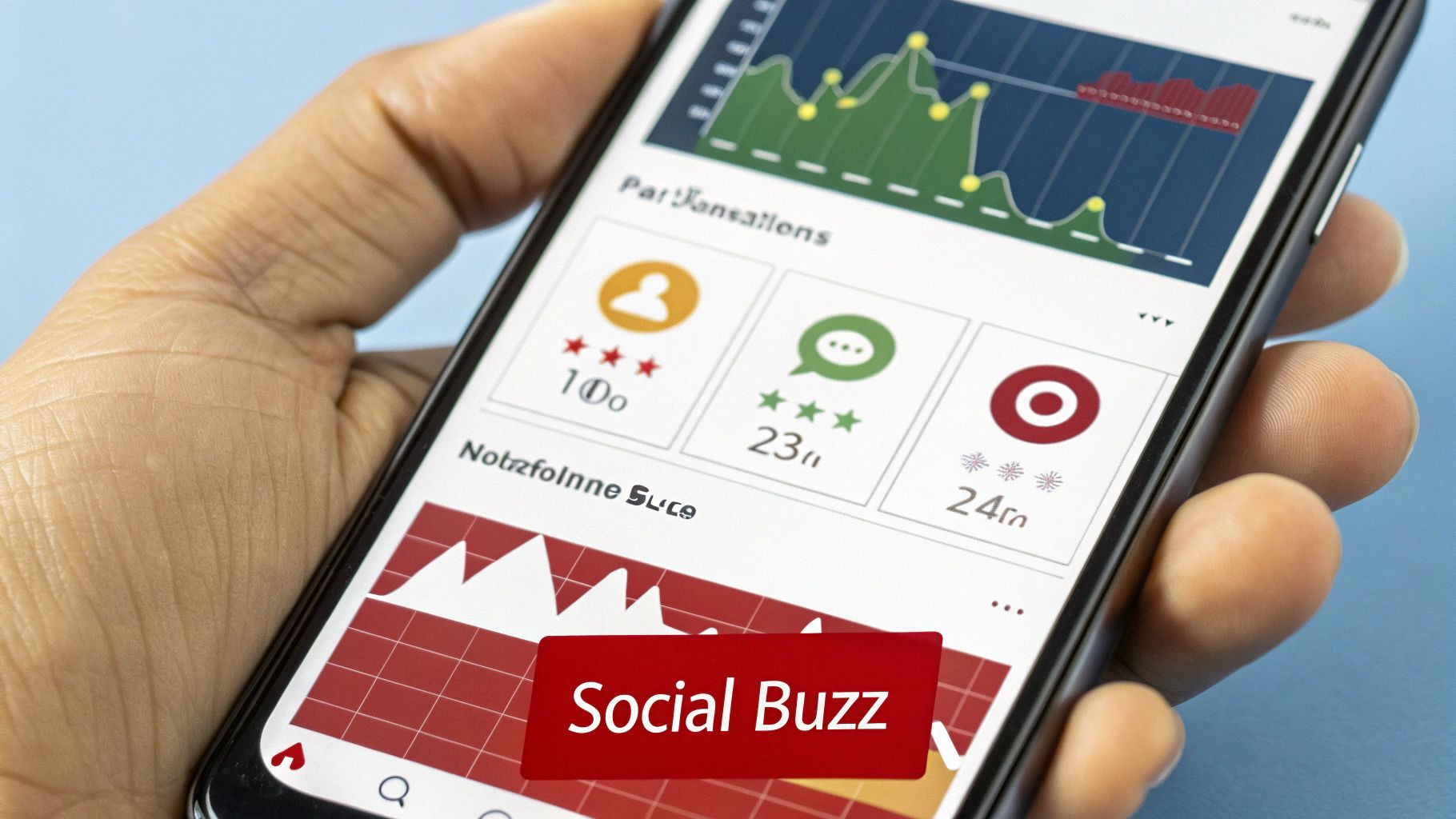
This strategy deserves a prominent place in any brand awareness arsenal because it offers unparalleled access to a vast and diverse audience. Platforms like Facebook, Instagram, Twitter, LinkedIn, and TikTok each cater to specific demographics and interests, enabling highly targeted campaigns. Furthermore, social media fosters two-way communication, facilitating real-time interaction with customers and providing valuable feedback for continuous improvement. The visual storytelling capabilities of platforms like Instagram and TikTok are particularly powerful for building brand personality and conveying complex messages in an engaging format.
Social media marketing thrives on creating high-quality, platform-specific content that resonates with the target audience. Visual content like images and videos are highly effective, especially when paired with compelling storytelling and a consistent brand voice. For example, Wendy's has mastered the art of witty banter and playful roasting of competitors on Twitter, cultivating a unique brand personality that resonates with its target audience. Similarly, Nike leverages inspirational stories and stunning visuals on Instagram to connect with fitness enthusiasts and build a strong brand community. Learn more about Social Media Marketing
Social media's interactive nature also allows for real-time engagement with customers, fostering a sense of community and building brand loyalty. Responding to comments and messages, running polls and Q&A sessions, and encouraging user-generated content can significantly amplify brand awareness and build a positive brand image. For instance, Chipotle successfully leveraged TikTok's viral dance challenges to engage younger audiences and generate significant buzz around their brand. Thinking about utilizing social media for your musical pursuits? A great resource for learning the ropes is Social Media Marketing For Musicians from artist.tools. Social media is a powerful tool for building brand awareness, especially for musicians. Platforms like Instagram, TikTok, and Twitter can help you connect with fans, share your music, and build a community around your brand.
While social media marketing offers numerous benefits, it also presents certain challenges. The constantly evolving algorithms of social media platforms can limit organic reach, necessitating investment in paid advertising to maintain visibility. The risk of negative publicity going viral is also a significant concern, requiring careful monitoring and proactive reputation management. Moreover, the sheer volume of content on social media necessitates consistent effort and strategic planning to cut through the noise and capture audience attention.
Tips for Effective Social Media Marketing as a Brand Awareness Strategy:
- Maintain a consistent brand voice and visual identity: This ensures brand recognition across all platforms.
- Prioritize quality over quantity: Focus on creating engaging content that resonates with your target audience.
- Engage authentically: Respond to comments and messages promptly and build genuine relationships with your followers.
- Leverage platform-specific features: Use hashtags, stories, live videos, and other features to maximize reach and engagement.
- Monitor social listening: Track brand mentions and sentiment to understand public perception and identify opportunities for improvement.
- Utilize targeted advertising: Reach specific demographics and interests through paid campaigns to maximize brand awareness within your desired audience segments.
Social media marketing is a crucial brand awareness strategy for Fortune 100 companies, tech startups, corporate marketing teams, venture capital firms, and event coordinators. Its ability to reach a wide audience, foster engagement, and build brand personality makes it an indispensable tool in the modern marketing landscape. By understanding the nuances of each platform and implementing a strategic approach, brands can leverage social media to achieve significant brand awareness and drive tangible business results.
3. Influencer Partnerships
Influencer partnerships represent a powerful brand awareness strategy, leveraging the reach and credibility of individuals with dedicated social followings to connect with target audiences authentically. These collaborations, between brands and individuals viewed as experts within their niche, offer a unique opportunity to tap into established communities and generate genuine interest in products or services. Unlike traditional advertising, influencer marketing relies on trust and personal connection, making it a highly effective approach in today's digitally-driven world. This method earns its place in the list of top brand awareness strategies due to its ability to generate organic buzz, drive engagement, and reach specific demographics with tailored messaging.

Influencer marketing works by capitalizing on the pre-existing relationship between an influencer and their followers. Instead of broadcasting a message to a broad audience, brands partner with influencers to introduce their products or services to a highly engaged and receptive community. The influencer acts as a trusted intermediary, endorsing the brand and sharing their genuine experiences with their followers. This approach fosters a sense of authenticity and encourages organic word-of-mouth marketing. Several partnership models exist, including sponsored posts, ambassador programs, and collaborative product development. Sponsored posts involve payment for a specific piece of content promoting the brand. Ambassadorships involve longer-term partnerships where the influencer represents the brand over an extended period. Collaborations can involve co-creating products or content, offering a deeper level of integration between the brand and the influencer.
Several successful examples demonstrate the power of influencer partnerships. Daniel Wellington’s watch brand built its initial success largely through collaborations with micro-influencers, strategically targeting specific demographics and building brand recognition through authentic endorsements. Glossier, a beauty brand, cultivated a loyal following by establishing a robust ambassador program that empowers everyday users to become brand advocates. Gymshark strategically partners with fitness influencers to showcase their apparel and build a strong community around their brand. HelloFresh, a meal kit delivery service, regularly collaborates with lifestyle and cooking influencers to reach new audiences and demonstrate the value of their product.
For Fortune 100 companies, influencer partnerships can be an effective way to humanize the brand and connect with younger demographics. Tech startups can leverage influencers to build early buzz and generate excitement around new product launches. Corporate marketing teams can utilize influencer marketing to complement existing campaigns and reach niche audiences. Venture capital firms can encourage their portfolio companies to explore influencer partnerships as a cost-effective marketing strategy. Event coordinators can partner with influencers to promote events and generate pre-event buzz.
Key Features and Benefits:
- Access to Established, Engaged Audiences: Influencers offer direct access to niche communities, allowing brands to bypass traditional advertising channels and connect with highly targeted demographics.
- Authentic Product Endorsements and Reviews: Influencers provide genuine product experiences and reviews, fostering trust and credibility with their followers.
- Multiple Partnership Models: The flexibility of sponsored posts, ambassadorships, and collaborations allows brands to tailor their approach based on specific objectives.
- Cross-Platform Content Creation: Influencers can create content across various platforms, including Instagram, YouTube, TikTok, and blogs, maximizing reach and engagement.
- Performance Tracking: Unique codes, affiliate links, and platform analytics allow brands to measure campaign performance and track ROI.
Pros:
- Immediate Access to Targeted Audiences: Quickly reach specific consumer segments.
- Higher Trust Levels: Benefit from the influencer's established credibility.
- Cost-Effective: Compared to celebrity endorsements, influencer partnerships often offer a more accessible budget.
- Authentic Content Creation: Genuine content resonates more effectively with audiences.
- Measurable Campaign Performance: Track results and optimize strategies based on data.
Cons:
- Risk of Influencer Controversies: Negative publicity surrounding an influencer can impact the brand's reputation.
- Difficulty in Measuring Long-Term Brand Impact: Quantifying the long-term effects on brand perception can be challenging.
- Potential for Inauthentic Partnerships: Choosing the wrong influencer can lead to forced or inauthentic content.
- Varying Engagement Rates and Audience Quality: Careful vetting is essential to ensure a genuine and engaged audience.
- Regulatory Compliance: Disclosure requirements must be adhered to for sponsored content.
Tips for Successful Influencer Partnerships:
- Align Values: Partner with influencers whose values and audience align with your brand.
- Prioritize Engagement: Focus on engagement rates rather than follower count to identify authentic influencers.
- Creative Freedom: Allow influencers creative freedom within established brand guidelines.
- Clear Expectations: Establish clear expectations and deliverables upfront.
- Long-Term Relationships: Build ongoing relationships for sustained impact.
Influencer partnerships have been popularized by numerous success stories, including Kylie Jenner's cosmetics brand, PewDiePie's gaming influence, Michelle Schroeder-Gardner's personal finance blog (Making Sense of Cents), and Fashion Nova's Instagram influencer strategy. By carefully selecting influencers and implementing a well-defined strategy, brands can leverage the power of influencer marketing to significantly enhance their brand awareness and reach new heights of success.
4. Search Engine Optimization (SEO)
Search Engine Optimization (SEO) is the practice of enhancing your website’s content and structure to achieve higher rankings on search engine results pages (SERPs) for specific keywords relevant to your business. It’s a cornerstone of any comprehensive brand awareness strategy because it increases your organic (non-paid) visibility. When potential customers search for products, services, or information related to your industry, effective SEO ensures your brand appears prominently in their search results. This organic presence not only drives traffic to your website but also establishes your brand as a credible and authoritative source within your industry.
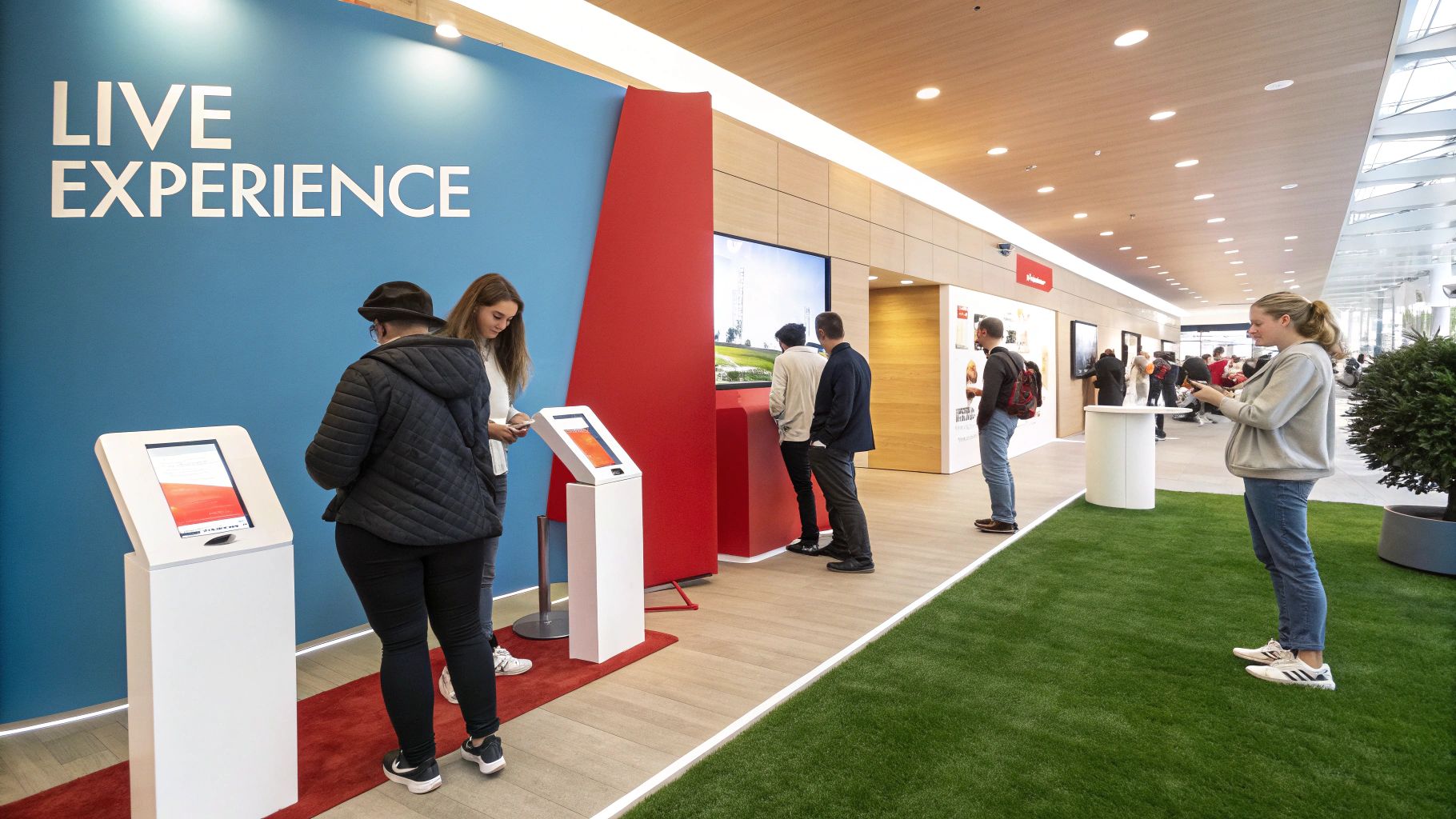
SEO encompasses a range of techniques, including keyword research and optimization, on-page and technical website optimization, link building to improve domain authority, local SEO for geographically targeted businesses, and content optimization aligned with user search intent. For example, keyword research identifies the terms your target audience uses when searching online. On-page optimization involves incorporating these keywords strategically within your website's content, meta descriptions, and title tags. Technical SEO focuses on improving website infrastructure, such as site speed and mobile-friendliness, for optimal search engine crawling and indexing. Off-page optimization, like link building, involves earning high-quality backlinks from reputable websites, signaling to search engines that your content is valuable and trustworthy.
The benefits of SEO for brand awareness are substantial. It generates long-term, sustainable organic traffic growth, proving significantly more cost-effective than paid advertising in the long run. Organic visibility builds credibility and trust with users, as high search rankings are often perceived as an endorsement of quality and relevance. SEO also effectively targets users with high purchase intent, as they are actively searching for solutions related to your offerings. Moreover, SEO provides measurable results and ROI, allowing you to track keyword rankings, organic traffic, and conversions to assess the effectiveness of your strategy. You can learn more about Search Engine Optimization (SEO) and how to measure its effectiveness for your brand.
Consider these examples of successful SEO implementation: Zappos dominates footwear-related search terms, consistently appearing at the top of SERPs for relevant searches. Moz, a leading SEO software provider, has built a comprehensive SEO resource hub that ranks highly for SEO-related keywords, establishing them as an industry authority. Airbnb utilizes location-based landing pages optimized for travel searches, effectively capturing users looking for accommodation in specific destinations. Recipe websites like AllRecipes consistently capture food-related searches by providing high-quality, SEO-optimized content that answers user queries.
While SEO offers significant advantages, it's essential to be aware of its challenges. Results typically take 3-6 months to materialize, requiring patience and a long-term perspective. Ongoing optimization and maintenance are crucial to stay ahead of the competition and adapt to algorithm updates. Search engine algorithms can change, impacting rankings and necessitating adjustments to your SEO strategy. Ranking for popular keywords can be highly competitive, requiring significant effort and resources. Finally, technical knowledge is often required for effective implementation, particularly for aspects like technical SEO and advanced link-building strategies.
For Fortune 100 companies, tech startups, corporate marketing teams, venture capital firms, and event coordinators, a robust SEO strategy is paramount. Whether you are launching a new product, expanding into a new market, or simply aiming to solidify your brand presence, SEO is a crucial tool.
Here are some actionable tips to enhance your SEO efforts:
- Focus on long-tail keywords: These are longer, more specific phrases with lower competition, allowing you to target niche audiences and gain traction more easily. For example, instead of targeting "shoes," consider "best running shoes for marathon training."
- Create comprehensive, helpful content: Content that thoroughly answers user questions and provides valuable information is more likely to rank well and attract organic traffic.
- Optimize for mobile-first indexing: Google prioritizes the mobile version of your website for indexing and ranking, making mobile optimization essential for SEO success.
- Build high-quality backlinks: Earn backlinks from reputable websites by creating valuable content that others want to link to.
- Monitor and improve page loading speeds: Slow loading times negatively impact user experience and SEO rankings. Optimize images, leverage browser caching, and minimize unnecessary code to improve site speed.
By implementing these strategies and staying informed about SEO best practices, you can leverage the power of search engine optimization to significantly enhance your brand awareness and drive sustainable organic growth.
5. Public Relations and Media Outreach
Public Relations (PR) and media outreach represent a powerful arsenal within any comprehensive brand awareness strategy. Unlike paid advertising, PR focuses on earning media coverage and building relationships with the public and key stakeholders through strategic communication. This approach fosters third-party credibility, enhancing brand trust and reputation in a way that paid efforts often can't replicate. For Fortune 100 companies, tech startups, corporate marketing teams, venture capital firms, and event coordinators alike, PR offers a potent avenue to shape public perception and drive brand awareness.
At its core, PR is about building mutually beneficial relationships. It's about understanding the needs of journalists, influencers, and your target audience, and crafting compelling narratives that resonate with them. This involves a multifaceted approach encompassing press release distribution, media pitching, thought leadership positioning, event planning, and diligent reputation management. By strategically navigating the media landscape, PR builds brand awareness through earned media – coverage that isn’t paid for, but rather organically generated through compelling storytelling and relationship building.
One of the most significant advantages of PR is the inherent credibility it brings. When a respected media outlet features your brand, it carries a weight that paid advertising simply can’t match. This third-party validation acts as a powerful endorsement, influencing audience perception and boosting brand trust. Consider Tesla's product launches, which consistently generate massive media buzz. This isn't solely due to advertising; it's a result of masterful PR, generating excitement and anticipation through carefully orchestrated media outreach and captivating storytelling around innovation and disruption.
Beyond product launches, PR can be leveraged to establish thought leadership. By positioning company executives as experts in their respective fields, businesses can gain significant industry recognition and influence public discourse. Salesforce, for instance, has effectively leveraged its Trailhead education platform not only to empower users but also to garner substantial positive PR and establish itself as a leader in the tech education space. This type of thought leadership positioning builds long-term brand equity and resonates deeply with target audiences.
PR is also invaluable for crisis communication and reputation management. In today's hyper-connected world, negative news can spread like wildfire. A well-crafted PR strategy equips organizations to respond swiftly and transparently during crises, mitigating damage and protecting brand reputation. Conversely, proactive community relations and stakeholder communication initiatives build goodwill and foster positive brand perception, creating a buffer against potential future crises.
While PR offers numerous advantages as a brand awareness strategy, it's essential to understand its limitations. Unlike paid advertising, PR doesn't guarantee media coverage. Securing positive media attention requires skilled PR professionals who can craft compelling pitches and cultivate relationships with journalists and media contacts. Furthermore, the timing and specific messaging in earned media can be difficult to control, and there's always a risk of negative publicity backlash. Measuring the direct impact of PR can also be challenging, though advancements in media monitoring and analytics are making this increasingly feasible.
For companies looking to maximize their PR efforts, several actionable tips can prove invaluable:
- Build genuine relationships: Nurture authentic connections with journalists and media contacts. Understand their interests and editorial calendars.
- Create newsworthy stories: Tie your brand narrative to current industry trends and events. Offer unique perspectives and insights that journalists will find valuable.
- Respond promptly and transparently during crises: Establish clear communication protocols and be prepared to address negative publicity head-on with honesty and transparency.
- Leverage company executives as thought leaders: Position key executives as industry experts through speaking engagements, bylined articles, and interviews.
- Monitor media mentions and brand sentiment: Regularly track media coverage and analyze public sentiment to understand the effectiveness of your PR efforts and identify areas for improvement.
From Edward Bernays, considered the father of public relations, to modern-day masters like Richard Branson and Elon Musk, the power of PR to shape brand perception is undeniable. By strategically integrating PR and media outreach into your overall brand awareness strategy, you can build lasting brand equity, enhance credibility, and effectively engage your target audience through the power of earned media.
6. Event Marketing and Experiential Campaigns
Event marketing and experiential campaigns represent a powerful brand awareness strategy that focuses on creating memorable and interactive experiences for customers. By engaging directly with their target audience through events, trade shows, pop-up activations, and immersive campaigns, brands can forge emotional connections that resonate far beyond traditional digital marketing efforts. This strategy allows companies to step outside the screen and interact with their audience on a personal level, fostering a sense of community and brand loyalty. This approach is particularly effective for Fortune 100 companies, tech startups, corporate marketing teams, venture capital firms, and event coordinators looking to make a lasting impression.
At its core, experiential marketing thrives on providing hands-on, real-world interactions with a brand. Think of it as "showing, not just telling." Instead of simply advertising a product's features, experiential campaigns allow consumers to experience those features firsthand. This might involve interactive product demonstrations, immersive installations that showcase a brand's story, or engaging activities that align with the brand's values. This direct interaction creates a more tangible and lasting impression than passive advertising, contributing significantly to brand recall and positive associations.
Several features contribute to a successful experiential campaign. These include interactive brand experiences and demonstrations, a strong presence at trade shows and industry networking events, creative pop-up stores and temporary installations, sponsorship of relevant events and community activations, and increasingly, the integration of virtual and hybrid event capabilities. The versatility of this approach allows brands to tailor their experiences to specific target audiences and marketing objectives.
The benefits of event marketing and experiential campaigns are numerous. They create memorable, emotional brand connections that resonate with consumers on a deeper level. These experiences often generate valuable social media content and word-of-mouth marketing, amplifying the campaign's reach organically. Direct interaction with customers provides invaluable feedback and insights into their preferences and needs. Furthermore, this strategy allows brands to build personal relationships with their customers, fostering loyalty and advocacy. Compared to digital marketing, event marketing often boasts higher engagement rates, capturing the attention of a captive audience.
However, it’s crucial to acknowledge the potential downsides. Experiential marketing can involve high upfront costs and significant resource requirements. Compared to the potentially vast reach of digital channels, event marketing can be geographically limited. Outdoor events are particularly susceptible to weather and logistical risks. Scaling and replicating successful experiences across different locations and audiences can also be challenging. Finally, measuring the return on investment (ROI) for experiential campaigns can be complex, requiring a thoughtful approach to data collection and analysis.
Numerous brands have effectively leveraged event marketing as a core brand awareness strategy. Red Bull's extreme sports events and content creation have become synonymous with the brand's identity, associating it with adventure and adrenaline. IKEA's pop-up apartment installations in city centers provide potential customers with a tangible experience of their furniture and home décor solutions. Coachella's brand partnerships and experiential marketing activations create a festival atmosphere that extends beyond the music. Samsung utilizes CES technology showcases and product launches to generate buzz and excitement around its latest innovations. These examples illustrate the diverse applications of experiential marketing across different industries.
When planning an experiential campaign, consider the following tips: Design experiences that closely align with your brand values and messaging to ensure a cohesive brand narrative. Create "Instagram-worthy" moments to encourage social sharing and amplify your reach. Implement systems for collecting contact information to facilitate follow-up marketing efforts. Train staff to act as effective brand ambassadors during events, conveying the brand's message and values. Finally, define clear metrics for measuring success, focusing on engagement levels, lead generation, and brand lift. Learn more about Event Marketing and Experiential Campaigns for specific giveaway ideas that can enhance your event marketing efforts.
Pioneering brands like Red Bull, with its extreme sports marketing approach, Nike, with its "Just Do It" experiential campaigns, Coca-Cola, with its focus on happiness and sharing, and Apple, with its meticulously crafted product launch events and retail experiences, have demonstrated the power of event marketing to build lasting brand awareness and cultivate loyal customer bases. This strategy deserves a prominent place in any comprehensive brand awareness plan because it offers a unique opportunity to connect with consumers on a deeper, more emotional level, ultimately driving engagement, advocacy, and brand growth.
7. Strategic Partnerships and Co-branding: A Powerful Brand Awareness Strategy
Strategic partnerships and co-branding represent a dynamic and effective approach to boosting brand awareness. This collaborative marketing strategy involves two or more brands joining forces to leverage each other's audiences, resources, and brand equity. By combining complementary strengths, these partnerships create mutual value, enabling brands to reach new markets, enhance brand perception, and achieve synergistic growth. This strategy is particularly valuable for Fortune 100 companies, tech startups, corporate marketing teams, venture capital firms, and event coordinators looking to amplify their brand presence and achieve specific marketing objectives. It deserves a place on any list of top brand awareness strategies because of its potential to dramatically expand reach and create unique, memorable experiences for consumers.
Strategic partnerships can take various forms, from cross-promotional marketing campaigns and joint content creation to product collaborations and shared resource utilization. The core principle is that the combined effort generates greater impact than either brand could achieve independently. Features of a successful strategic partnership often include: cross-promotional marketing campaigns across various channels; product collaborations resulting in co-created offerings that blend the expertise of both brands; shared access to resources, including marketing budgets, distribution networks, and customer databases; brand association and credibility transfer, where the positive perception of one brand enhances the image of the other; and joint content creation and distribution, maximizing engagement across both audiences.
Numerous successful examples demonstrate the power of strategic partnerships. Spotify and Starbucks' partnership, for example, enhanced both brands by offering Starbucks customers access to curated Spotify playlists and rewarding Spotify Premium users with Starbucks rewards. Nike and Apple's collaboration on fitness technology combined Nike's expertise in athletic performance with Apple's technological prowess, creating a compelling offering for fitness enthusiasts. Target's designer collaborations with brands like Missoni and Vera Wang bring high-end fashion to a wider audience, elevating Target's brand image while providing designers with increased visibility. Uber's partnerships with various restaurant chains streamline delivery services, benefiting both Uber and its restaurant partners. These examples illustrate how strategic partnerships can create win-win scenarios, driving brand awareness and business growth for all parties involved.
When considering this approach, understanding the advantages and disadvantages is crucial. On the plus side, partnering provides access to a partner’s established audience, offering an immediate boost to brand visibility. Shared marketing costs and resources can significantly reduce individual brand expenses, enabling broader reach. Enhanced credibility through brand association allows brands to leverage the positive reputation of their partners. The opportunity for creative collaboration often results in innovative marketing campaigns and product offerings. Finally, strategic partnerships can facilitate faster market entry and expansion, particularly for brands entering new geographic territories or product categories.
However, potential downsides exist. Brand dilution or confusion can arise if the partnership isn't carefully managed. Dependence on a partner's brand reputation creates vulnerability if the partner experiences negative publicity. Coordination challenges and misaligned goals can hinder campaign effectiveness. Shared control over marketing messages requires careful negotiation and alignment. Finally, the risk of partnership conflicts impacting campaigns necessitates proactive communication and conflict resolution mechanisms.
To maximize the effectiveness of strategic partnerships for brand awareness, consider these actionable tips. Choose partners with complementary but non-competing offerings to ensure a synergistic relationship. Ensure brand values and target audiences align to avoid brand dissonance and maximize reach within the desired demographic. Establish clear partnership agreements and expectations from the outset to minimize potential conflicts. Create unique value propositions that benefit both brands and resonate with the target audience. Continuously monitor partnership performance and customer feedback to optimize campaigns and ensure alignment with overall marketing goals. Learn more about Strategic Partnerships and Co-branding.
Long-standing successful partnerships like McDonald's and Coca-Cola, BMW and Louis Vuitton, Amazon's diverse partnership ecosystem, and Disney's numerous character licensing and brand partnerships demonstrate the enduring power of this brand awareness strategy. By carefully selecting partners, establishing clear goals, and executing collaborative campaigns, brands can leverage the power of strategic partnerships and co-branding to achieve significant and sustainable growth. This approach provides a powerful avenue for expanding reach, enhancing brand perception, and achieving a competitive edge in today’s dynamic marketplace, making it an indispensable element of a comprehensive brand awareness strategy.
Brand Awareness Strategies Comparison
| Strategy | Implementation Complexity 🔄 | Resource Requirements ⚡ | Expected Outcomes ⭐ | Ideal Use Cases 💡 | Key Advantages 📊 |
|---|---|---|---|---|---|
| Content Marketing | Medium - requires ongoing content creation | Medium - skilled creators and SEO tools needed | High - builds trust & organic leads | Long-term brand building, educational engagement | Cost-effective, improves SEO, builds credibility |
| Social Media Marketing | High - constant monitoring and engagement | Medium - content creation & paid ads | Medium-High - viral reach potential | Real-time engagement, brand personality development | Direct audience interaction, rich analytics |
| Influencer Partnerships | Medium - partner selection and coordination | Medium-High - influencer fees and management | High - immediate targeted access | Product launches, authentic endorsements | Authentic content, measurable performance |
| Search Engine Optimization (SEO) | High - requires technical knowledge and ongoing efforts | Medium - tools and expertise required | High - sustainable organic growth | Improving search rankings and organic traffic | Cost-effective, targets high purchase intent |
| Public Relations & Media Outreach | High - requires skilled professionals | Medium - PR team and media relations | Medium - builds reputation & credibility | Crisis management, brand reputation, thought leadership | Earned media credibility, long-term brand equity |
| Event Marketing & Experiential Campaigns | High - complex planning and logistics | High - event costs and staffing | High - strong emotional connections | Face-to-face engagement, memorable brand experiences | High engagement, social sharing, direct feedback |
| Strategic Partnerships & Co-branding | Medium-High - coordination between brands | Medium - shared resources & joint efforts | Medium-High - market expansion | Joint campaigns, complementary audiences | Shared costs, enhanced credibility, faster market entry |
Amplify Your Brand's Impact
Building a recognizable and respected brand requires a multifaceted approach. This article explored seven key brand awareness strategies: content marketing, social media marketing, influencer partnerships, search engine optimization (SEO), public relations and media outreach, event marketing, and strategic partnerships. Mastering these core components of brand building allows you to connect with your target audience on multiple levels, fostering trust and loyalty. From crafting compelling content that resonates with your audience to leveraging the reach of influencers and optimizing your online presence through SEO, each strategy plays a vital role in increasing your brand's visibility and driving business growth. The most effective brand awareness strategies are those implemented consistently and with a customer-centric focus. By incorporating these tactics into your overall marketing plan, you create a powerful brand presence that differentiates you from competitors and positions your organization for long-term success.
These brand awareness strategies empower you to shape the narrative around your brand and cultivate a strong, positive image in the minds of your target audience – Fortune 100 companies, tech startups, corporate marketing teams, venture capital firms, and event coordinators alike. A well-executed brand awareness campaign can significantly impact your bottom line, driving customer acquisition and boosting overall market share. Remember that brand building is a continuous journey, and the effort you invest today will yield significant returns in the future.
Looking for a tangible way to boost your brand awareness initiatives? Explore custom-branded promotional electronics with Electronic Finishing Solutions to create lasting impressions with clients and employees. Visit Electronic Finishing Solutions to discover how their innovative solutions can complement your brand awareness strategies and further amplify your brand's impact.

